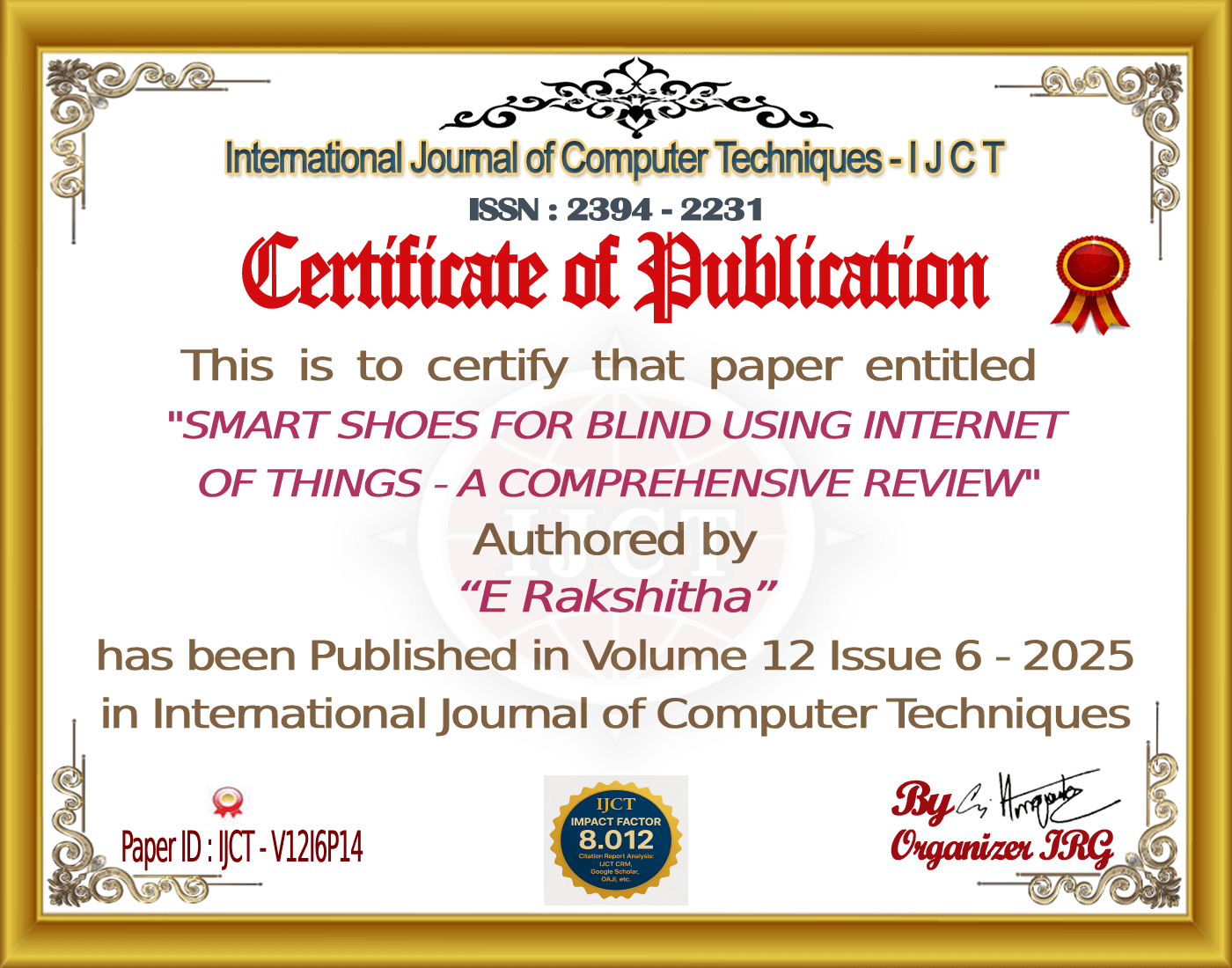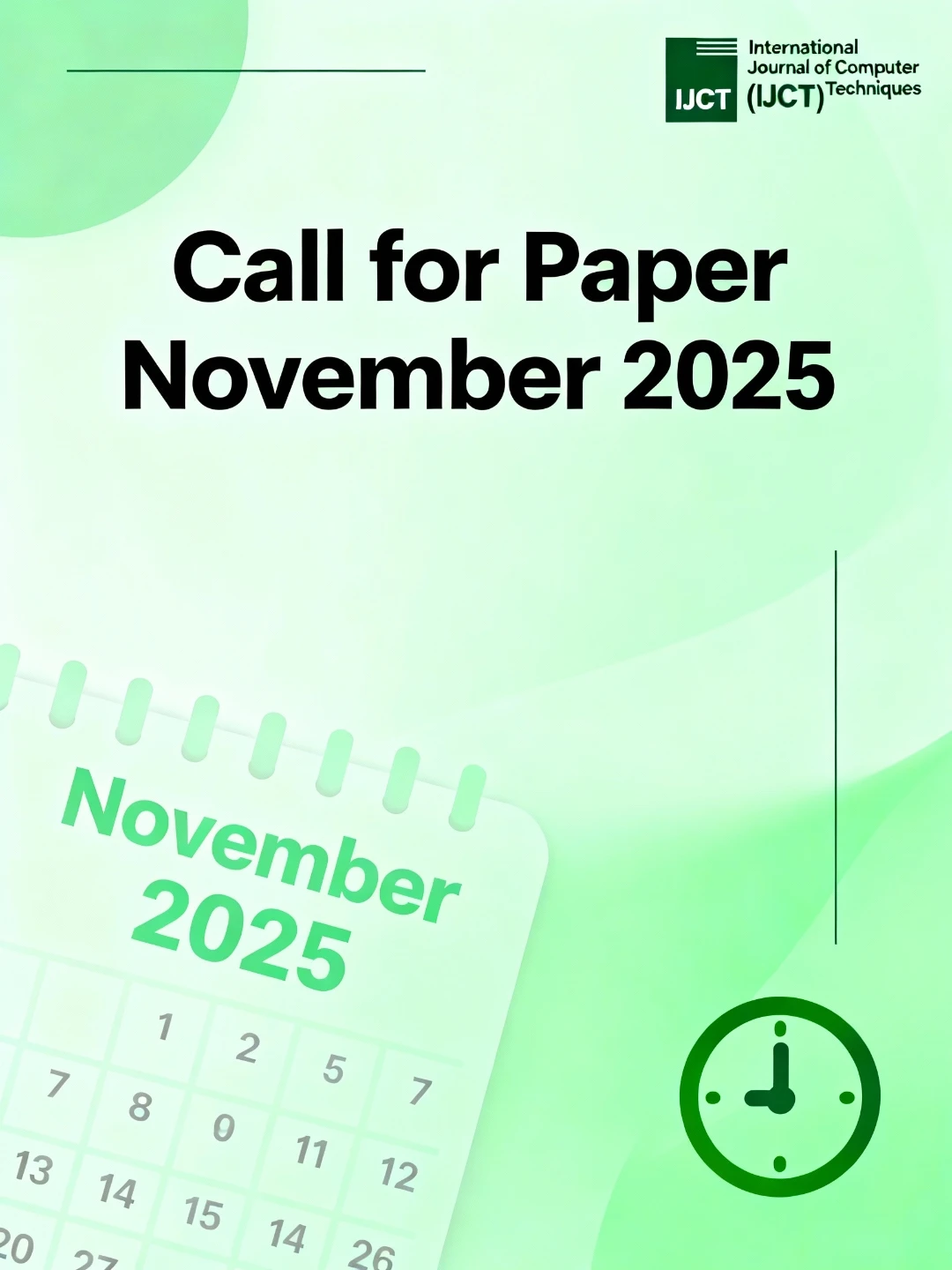
AI-Powered Smart Traffic Management System for Urban Congestion Reduction – Volume 12 Issue 5

International Journal of Computer Techniques
ISSN 2394-2231
Volume 12, Issue 5 | Published: September – October 2025
Author
Swarnendu Ghosh , Tridip Saha , Debarshita Biswas , Dhriti Rudra Pal , Mridul Ch. Shil, Badal Debbarma
Table of Contents
ToggleAbstract
This project showcases a real-time, AI-powered traffic signal management system that utilises intelligent signal control to enhance urban mobility and reduce traffic congestion. To dynamically control signal timings at intersections and monitor traffic density, the system integrates embedded electronics, computer vision, and machine learning. Traffic density is estimated in real-time by analysing live video feeds from cameras using deep learning models, such as YOLO (You Only Look Once), which are used for vehicle detection and counting. To monitor traffic patterns and gradually improve system accuracy, the data is processed and stored in a dedicated database. The system utilises heuristic algorithms or reinforcement learning techniques to optimise signal timings in real-time based on the number of vehicles. This system allows high-density lanes to have longer green lights. Hardware traffic lights are controlled by embedded controllers, such as Raspberry Pi or Arduino, based on AI-generated timing data. Additionally, for traffic monitoring and future scalability, the system provides a real-time web-based dashboard. In addition to reducing idle time and fuel usage, this project establishes the framework for smart city traffic infrastructure and enables the prioritisation of emergency vehicles.
Keywords
AI-powered traffic management, computer vision, deep learning, real-time signal control, smart city infrastructure.Conclusion
The Real-Time AI-Based Traffic Signal Management System presents an innovative and practical solution to the growing challenges of urban traffic congestion. By leveraging artificial intelligence, computer vision, and embedded systems, this project provides a dynamic approach to traffic signal control that adapts in real-time based on vehicle density and traffic flow. Unlike conventional fixed-timer systems, this intelligent system ensures optimal utilization of green signal time, thereby reducing vehicle idle time, fuel consumption, and environmental pollution. The system also lays a strong foundation for future smart city infrastructure. Its modular and scalable architecture allows integration of advanced features such as emergency vehicle prioritization, V2I communication, pedestrian detection, and traffic violation monitoring. Real-time data collection and AI-based decision-making ensure enhanced road safety, improved urban mobility, and better commuter experience.
References
[1] S. S. Zia, M. Naseem, I. Mala, M. Tahir, T. J. A. Mughal, and T. Mubeen, “Smart traffic light system by using artificial intelligence,” Sindh University Research Journal (Science Series), vol. 50, no. 4, pp. 639–646, 2018. DOI : 10.26692/sujo/2018.12.00104 [2] A. Phand, S. Bagade, N. Bandgar, and G. Wayal, “Real-time traffic light optimization using AI and IoT,” International Journal for Research in Applied Science and Engineering Technology (IJRASET), vol. 12, IV, 2024. DOI: https://doi.org/10.22214/ijraset.2024.60686 [3] Natnael-k, AI-based traffic control system [Computer software], GitHub. URL: https://github.com/Natnael-k/AI-based-Traffic-Control-System– [4] A. Kumar and R. Kaur, “AI-based traffic signal control system using Internet of Things (IoT),” Procedia Computer Science, vol. 192, pp. 5154–5163, 2021. URL: https://www.sciencedirect.com/science/article/pii/S18770509221025187 [5] Leveraging deep learning for traffic management using existing system. (2025). Journal of Data Analytics and Artificial Intelligence, 4(1), Article 52. https://doi.org/10.46632/jdaai/4/1/52
IJCT Important Links
© 2025 International Journal of Computer Techniques (IJCT).











